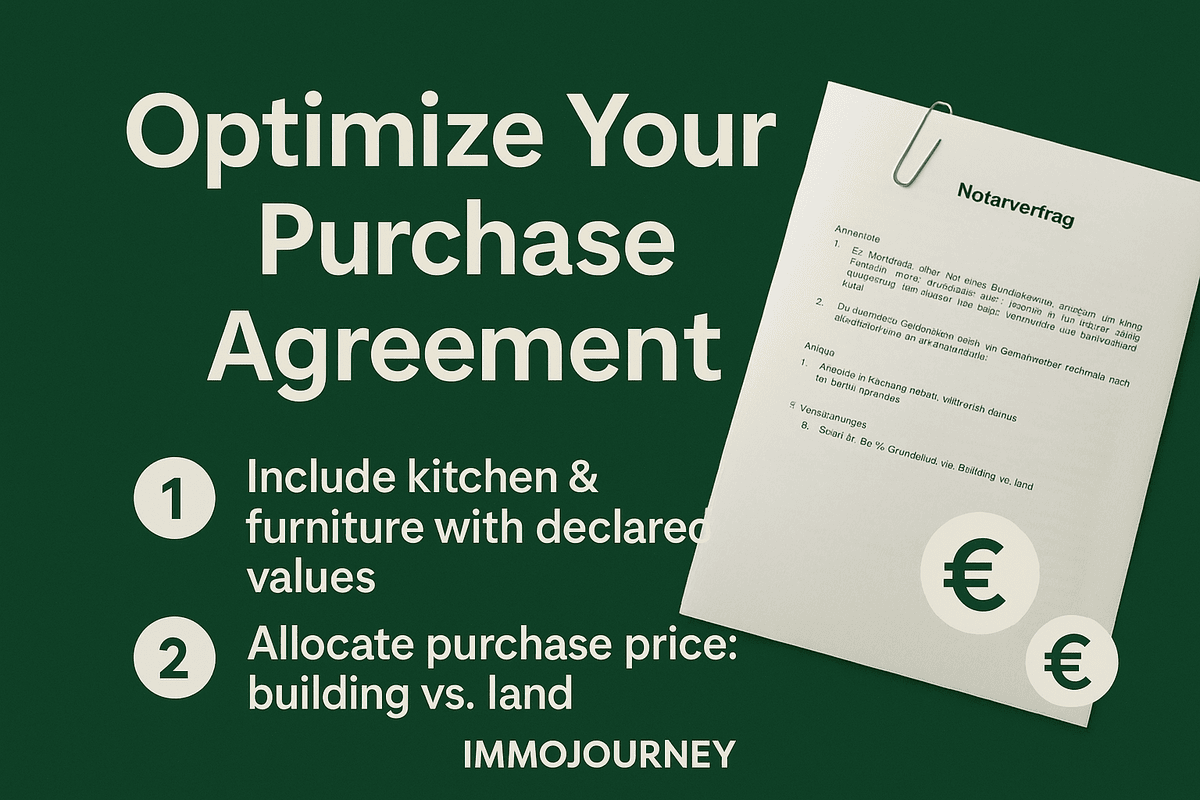Depreciation is one of the most powerful yet underutilized tools in real estate investing. Especially in Germany, understanding how depreciation (AfA) improves your cash flow can lead to significant tax savings and stronger monthly performance. It’s not just an accounting term—it’s a strategy that directly affects your bottom line.
In this post, we’ll explain what depreciation really is, how to calculate it correctly, and how using it strategically can leave you with more money at the end of every year.
What Is Depreciation (AfA) in Real Estate?
Depreciation reflects the decreasing value of the building over time due to wear and tear. In Germany, this is recognized through AfA—a tax deduction for the building portion of your property.
Important: You can’t depreciate the land—only the building and any structural improvements.
For residential buildings built after 1925, the standard depreciation rate is:
- 2% per year over 50 years using the linear method.
- For new buildings, a degressive (non-linear) rate may apply in early years.
Real-Life Example: How Much Can You Write Off?
Purchase Price of Property: €400,000
Land Value (based on contract or BORIS maps): €80,000
Formula to calculate land value:
Land value €/m² × (total land + building footprint area) × your ownership share (per the Teilungserklärung)
Building Value (AfA-relevant): €320,000
Annual Depreciation (AfA):
€320,000 × 2% = €6,400 per year
That’s €6,400 deducted from your taxable rental income every year—without affecting your bank balance.
Depreciation = More Cash Flow
Let’s say your rental property earns €12,000 annually.
- Without depreciation: You pay income tax on the full €12,000.
- With depreciation: Your taxable income becomes €12,000 – €6,400 = €5,600.
Assuming a 30% tax rate, that’s roughly €1,920 saved—money that stays in your account instead of going to the Finanzamt.
This is why depreciation is not just an accounting trick. It directly improves your monthly and annual cash flow.
How Do You Determine Building vs. Land Value?
This split is key to calculating your AfA correctly. Here are your options:
- Check your notary purchase contract – it may contain the breakdown.
- Use local Bodenrichtwert (standard land value) via public databases like BORIS.
- Get a formal valuation if there’s no clear split.
Keeping these numbers documented is critical—for your tax advisor, your financial planning, and future audits.
Common Pitfall: Ignoring or Guessing AfA
If you’re investing in property in Germany, ignoring depreciation means leaving money on the table. By understanding how depreciation (AfA) improves your cash flow, you not only reduce your annual tax burden but also gain better visibility into the true profitability of your investment.
Many landlords don’t claim depreciation properly. Why?
- It’s too complex to track manually.
- The values aren’t clear in the documentation.
- Their tax advisor doesn’t proactively push for it.
That’s where Immojourney’s Asset Manager becomes your secret weapon:
- Automatically calculates annual AfA
- Tracks depreciation across multiple units
- Consolidates building value, ROI, cash flow & tax impact in one dashboard




